
Welcome to the wildebeest migration, one of nature's most breathtaking displays, and its attractive world. This in-depth overview goes straight into the core of this extraordinary phenomenon, revealing its mysteries, challenges, and the breathtaking beauty it brings to the African savannah.
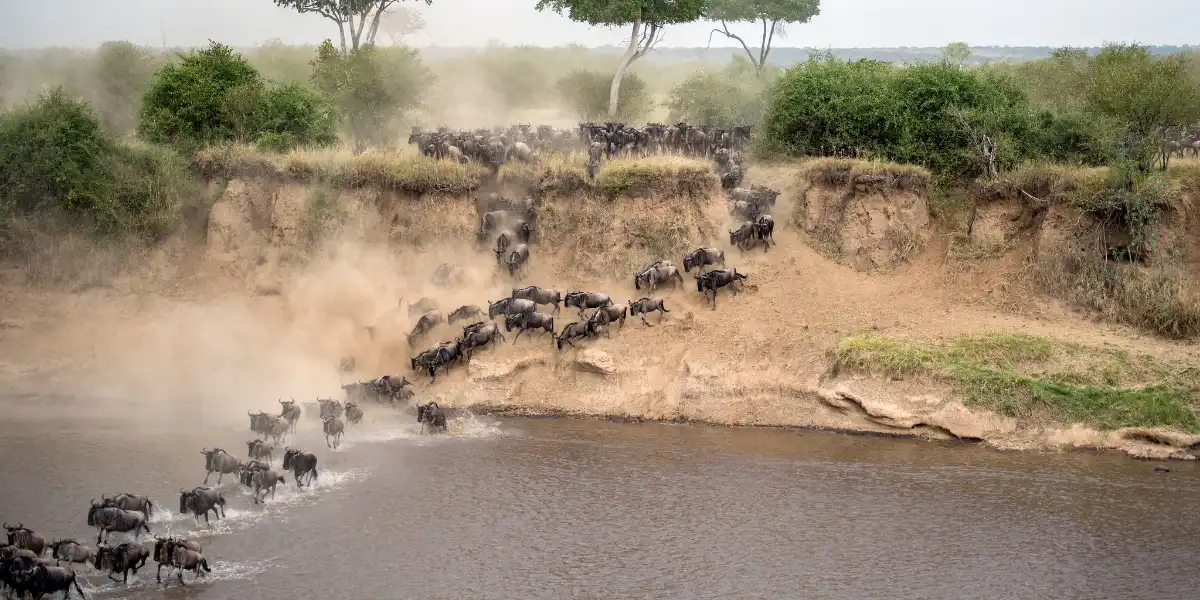
The Marvelous Wildebeest Migration: A Brief Overview
The wildebeest migration, popularly referred to as "The Greatest Show on Earth," is an incredible annual journey that involves millions of wildebeests, zebras, and other wildlife species traveling through the Serengeti ecosystem in Tanzania and the Maasai Mara National Reserve in Kenya. Predators wait while these majestic animals travel in search of better fields, so this breathtaking performance combines danger and wonder.
The Four Phases of the Migration
1. Calving Season: A Time of Renewal
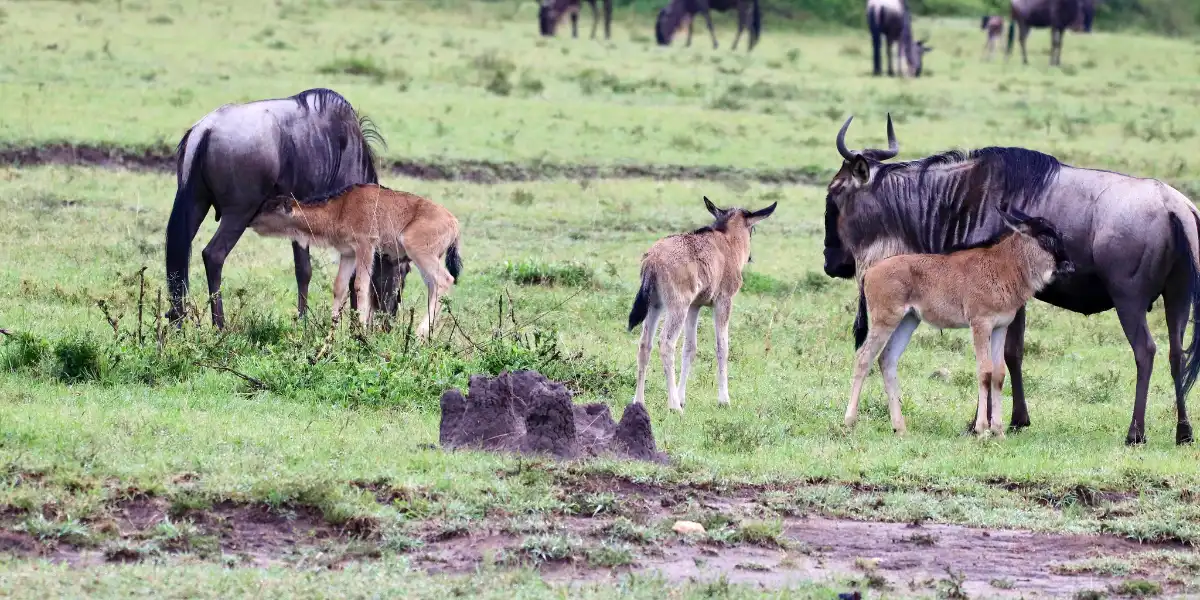
The trip starts in the Southern Serengeti, where tens of thousands of wildebeest mothers give birth to their young in the green grasses. From January to March, this stage, which is marked by renewal and risk as new life enters the world, takes place.
2. bringing into the west
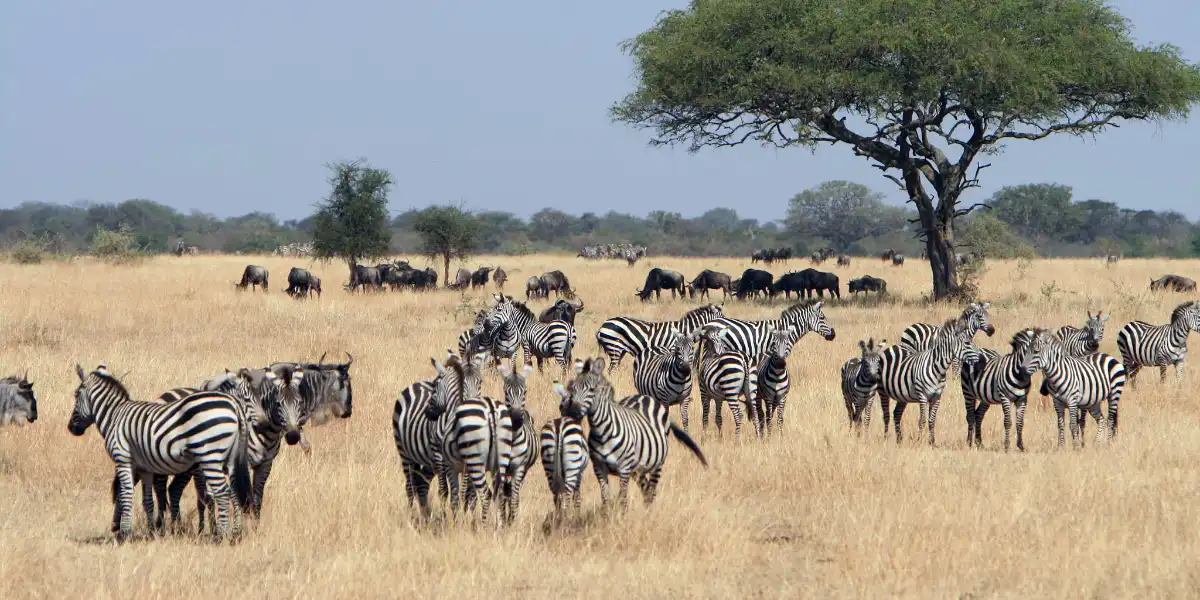
The herds begin making the difficult trek to the northwest as the dry season calls near, overcoming obstacles posed by decreasing water sources and hiding predators like Lions, Cheetahs, and Leopards. From April to June, there is a transitional period that prepares the way for the following sections of their journey.
3. The Mighty River Crossing
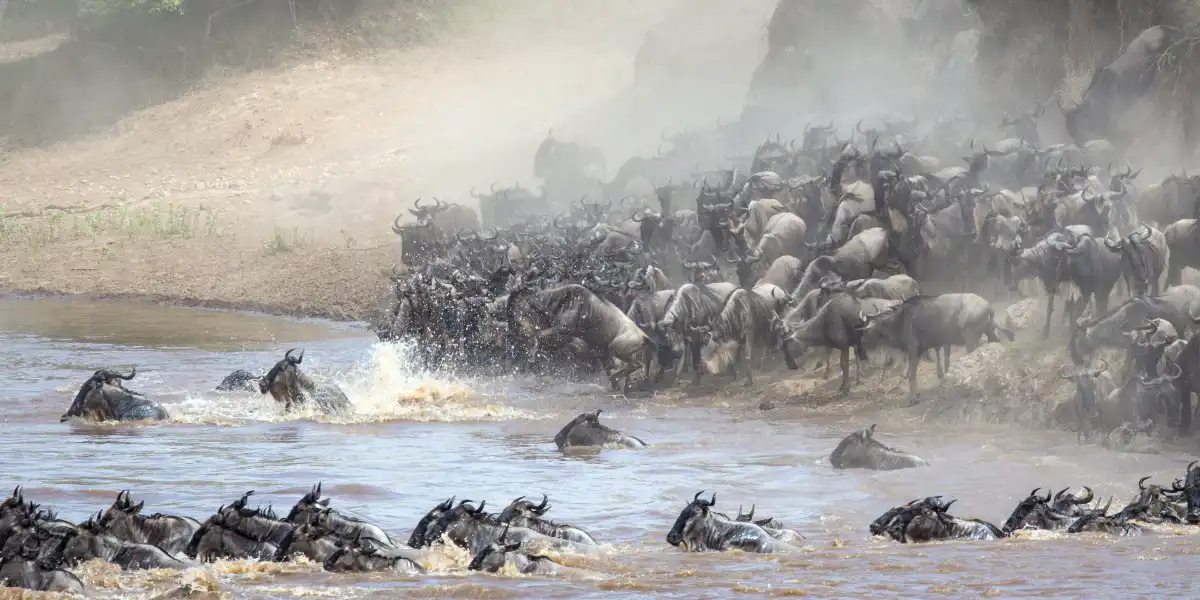
The wildebeests and zebras cross the Mara River between July and October, which is undoubtedly the most dramatic part of the migration. Underwater crocodiles make this journey an exciting spectacle of survival and resilience.
4. Returning South
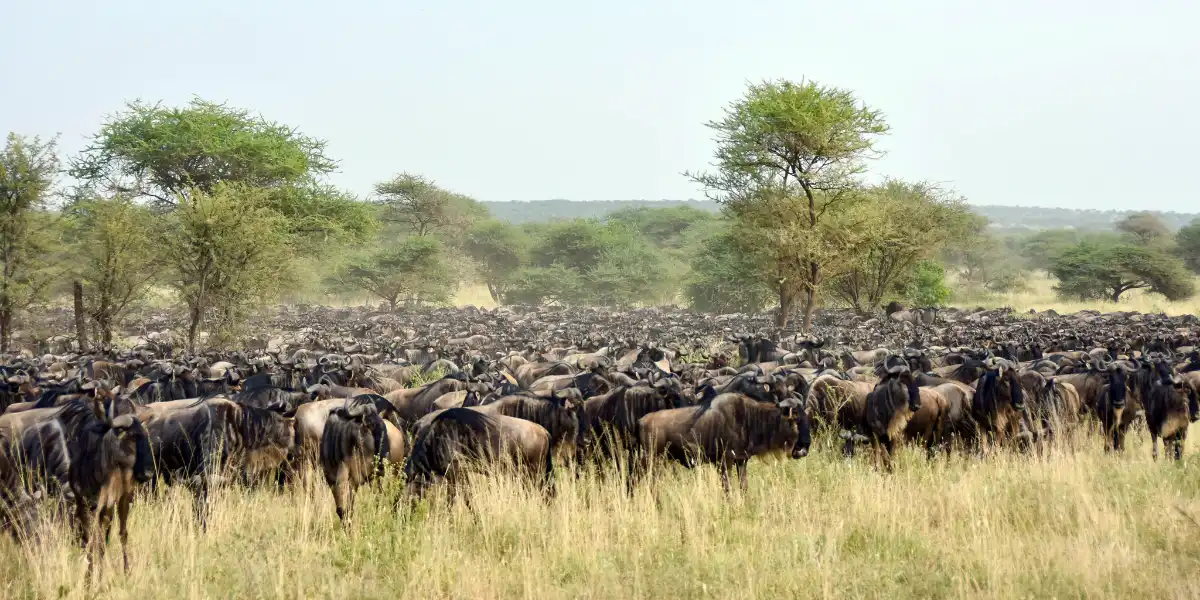
As the rains begin in November, the herds start their journey back to the Southern Serengeti, where the cycle of life begins anew. This final phase, marked by abundance and reunion, completes the circle of migration.
Bursting with Life: A Symphony of Sights and Sounds
Imagine being on a vast plain while being surrounded by millions of hooves pounding the ground. A sensory experience unlike any other is produced by the sheer intensity of this migration, the dust that rises with each step, and the noise of calls that fill the air.
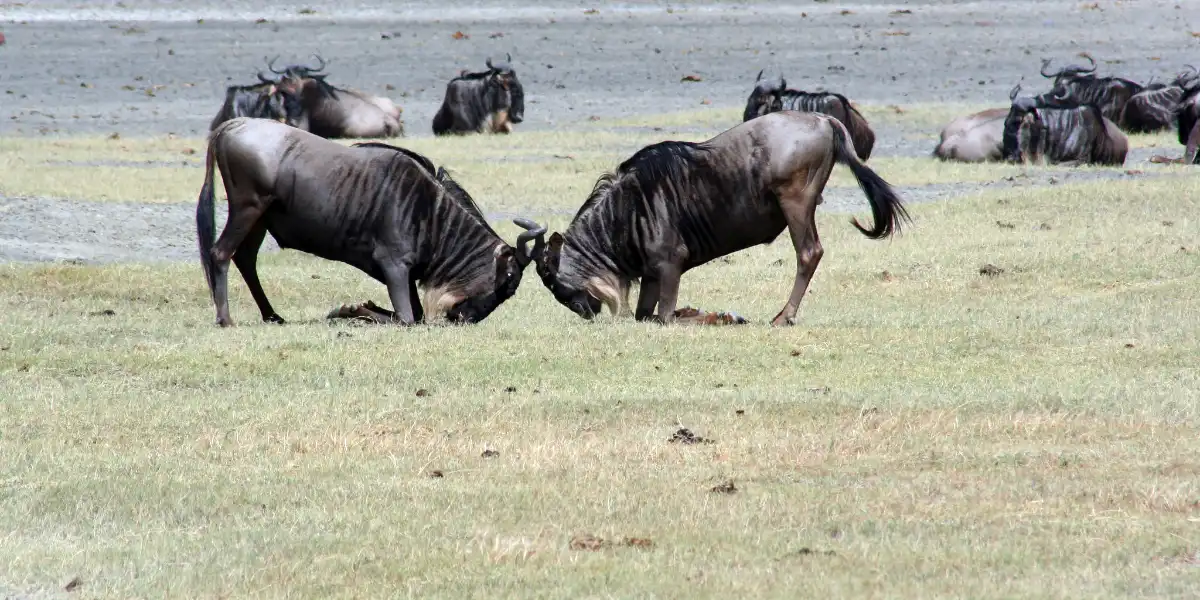
The Magic of Survival
Among all of this migration's beauty and splendor, there is a desperate battle for survival. The self-preservation instinct of the wildebeests is put to the test by predators who abound. The animal kingdom's complicated balance between life and death is constantly brought to mind by migration.
The wildebeest migration is a testament to the wonders of nature in the middle of Africa's wilderness. It captures the essence of the untamed beauty that Earth harbors in a mesmerizing journey of life, death, and renewal. We are reminded of our responsibility as planet stewards to protect such wonders for future generations as we take in this spectacle.
FAQs
1. When does the wildebeest migration occur?
The migration occurs annually, with different phases spanning throughout the year. The exact timing can vary slightly based on environmental factors.
2. What predators do the wildebeests encounter?
Predators such as lions and crocodiles pose significant threats during the migration, especially during the river crossing phase.
3. How long is the entire migration cycle?
The entire migration cycle, including the return journey, spans roughly one year.
4. Can tourists witness this migration?
Yes, tourists can witness this incredible spectacle by visiting the Serengeti ecosystem and Maasai Mara National Reserve during the relevant phases of the migration.
5. How does the migration impact the ecosystem?
The migration plays a crucial role in nutrient cycling and shaping the ecosystem, as the herds' movements help fertilize the land and influence vegetation patterns.

ubaTaeCJ
2024-11-17 14:41:38
1.
ubaTaeCJ
2024-11-17 14:39:13
1.